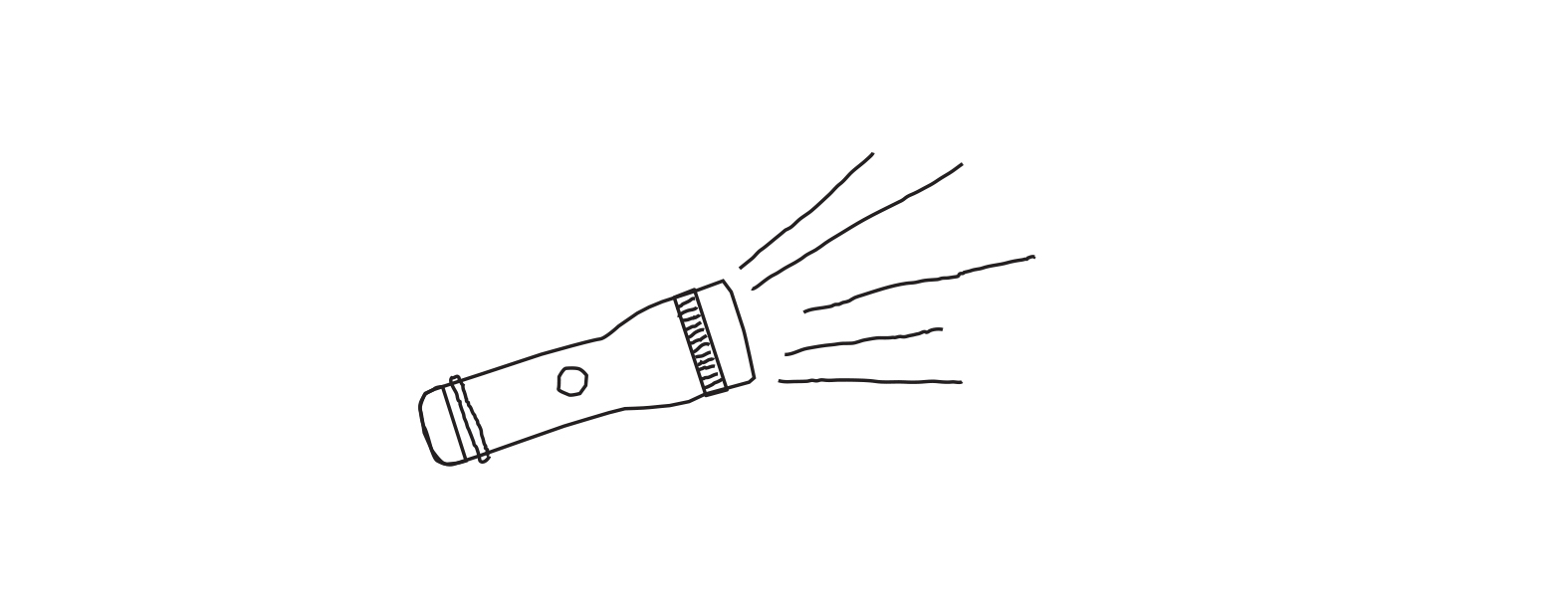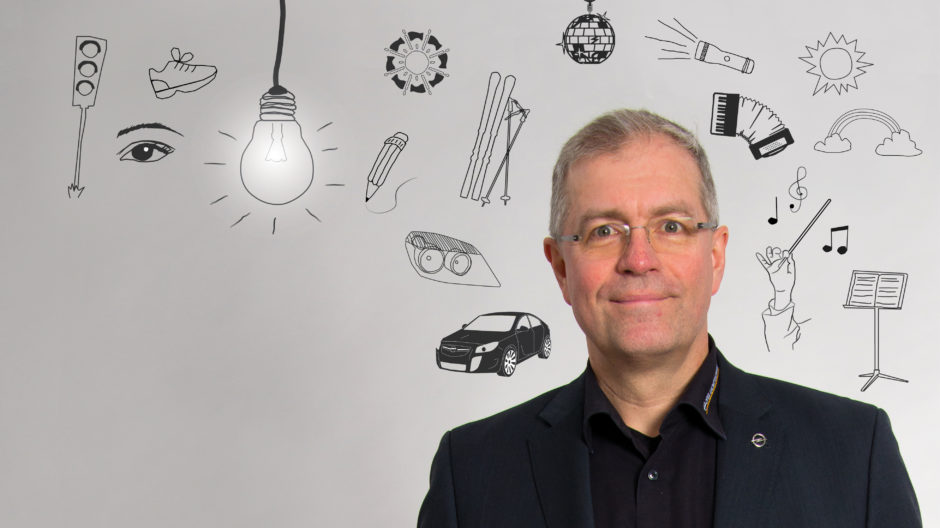2015 is the International Year of Light. Why, you ask? First of all, by proclamation of the U.N. General Assembly. Secondly, and this is decisive for this article, because Opel is set to launch a range of new and truly remarkable products in this area: three generations of headlight technology.
Ingolf Schneider, Director of Lighting Technology since 1997, is the man responsible. Headlights and taillights from different models are piled up everywhere in the conference room as we sit down for the interview. It almost feels as though we are being watched. On the other hand, we are literally right in the thick of things.
1. Mr. Schneider, what is it about your day job that fascinates you most?
I like the fact that as a lighting technician, you’re there for every step of the process, right from the very first sketch in the design department. It’s our job to bring visual ideas in line with technical feasibility. We also have to liaise with other departments developing associated components, such as the hood or fenders. I think it’s really exciting that when we’re putting a technology on the market, we have to tackle two challenges: We are continuously making fine adjustments to what we have already developed and at the same time, looking ahead to the automotive future. Right now, we are focusing on the headlights we’ll be seeing in the 2020s.

2. How has the development process changed since the beginning of your career?
It’s changed enormously. In the past, headlights would have high and low beams, parking lights, indicator lights, and a ribbed glass plate so that you couldn’t see the interior. We developed a prototype, analyzed the result at the Dudenhofen test center, and said: “It lights up very well.” Or maybe not. Then came a whole new development curve. It’s much more complex nowadays. Everything on the headlight is visible and can be moved. You can turn the lights up and dim them. The interiors and exteriors of all of the components are fully styled. We have a team that drives hundreds and thousands of kilometers at night to validate the dynamic system.
3. LED technology is now used in headlights. What’s the meaning behind the abbreviation?
LED stands for light emitting diode, which is an electronic semiconductor element. Here, electricity is converted directly into light, unlike conventional lights where energy is converted into heat first. In practice, this is no less than a revolution: extremely low energy consumption, long life span, and a wide variety of models. LEDs are also shock and vibration resistant and do not create a lot of glare. LEDs are the future.
4. How long does it take to turn an idea in headlight technology into a marketable product?
The maximum would be between four and five years. Right now, developmental periods are decreasing, simply because the technological advances are so major. We worked with halogen bulbs for 60 years until now. Xenon technology came in between. That system was based on a noble gas called xenon. We have been working on the award-winning AFL+ at Opel for the past 12 years. The Matrix LED lighting system is next, but I’m sure it won’t take another 12 years until we take the next step: eye-tracking technology.
5. What is the connection between these three technologies?
The key word is adaptive, which means that our systems adapt to the driver and the way that he or she drives.

6. Let’s start with the current generation: AFL+ safety lighting. Where does it score points on the road?
It improves the visibility of the driver’s vehicle and AFL+ also reduces strain on the driver, thereby reducing driver fatigue at night. Together with the Opel front camera, AFL+ offers up to ten light functions. The light beam of the xenon headlight automatically adapts to different driving situations and street and weather conditions. Other functions include dynamic curve light and cornering and energy-efficient LED daytime running lights.
7. Engineers at the International Technical Development Center (ITEZ) are currently preparing the final validation tests for introduction of the Matrix LED lighting system. What is so special about the concept that we are going to experience in our vehicles over the next year and a half?
The Matrix LED lighting system allows the glare-free high beam to become the norm, and it automatically and continuously adapts to every traffic situation. The new technology works like AFL+ together with the Opel front camera. At the same time, it takes situational adaptation and precision functions to the next level. If the camera detects oncoming vehicles or vehicles in front, individual LEDs are specifically disabled, yet the environment remains brightly illuminated. This way, the matrix light turns night into day for the vehicle occupants – without blinding oncoming traffic.
8. The third generation of the adaptive Opel light, eye tracking, is already in development and is set to be a topic in the 2020s. What can we expect?
Something groundbreaking in every sense of the word. We want to actually implement the idea that the human eye is capable of guiding and regulating light. The eye tracking principle relies on tracking via camera and intelligent analysis of eye movements using a special algorithm. Thanks to accelerated data preparation and forwarding, the headlight actuators respond in an instant – horizontally and vertically at the same time. We have been pursuing this project for two years with our colleagues at the ITEZ and TU Darmstadt.
9. With this kind of commitment to innovation, it’s no wonder they call you a lighting guru…
(Laughs) Jean-Philippe Kempf, our man in PR, once called me that at a media event. Of course, I’m very honored, but it’s quite funny and my colleagues love to tease me about it. Honestly, you can’t do anything on your own when it comes to lighting technology. I have a great team of 26 employees. That’s why I’m against making it about any one person. We enjoy success and experience setbacks together as a team.

10. Has the automobile industry changed its attitude toward safety awareness with new available technologies for lights?
Yes, it has. I think we really have to thank our styling colleagues for this. Awareness has increased ever since the look of headlights began playing a more important role. The Astra was our first car to get a cover lens. That was in 1990. From then on, headlights became much more visually appealing.
11. What inspires your work?
It often happens when I’m not on the road or at work, like when I’m off doing something else like hiking, skiing, or swimming, and I’ll see something that I can use later on. But of course, it’s not like I’m running around on the lookout all the time. It just happens by chance.
12. That’s lucky. Otherwise you would probably start to annoy your family.
(Laughs) Absolutely! I hope my being a pain is kept to a minimum. On the other hand, my wife and my two daughters do look at headlights and give me feedback about my work. It’s a mix of praise and constructive criticism.

13. Do you travel impartially on the roads or do you check the lights of other drivers?
That does happen, but it’s just a force of habit.
14. Do you think that drivers have a lack of knowledge when it comes to correctly adjusting lights?
Yes, I do. A lot of companies run campaigns every fall, offering to adjust headlights, but not enough people take advantage of them. If you’ve had poor visibility for your whole life, you just don’t know what you’re missing.
Text: Sabrina Künz / Photos: Martina Sabais (Asterion), private
The bond between Ingolf Schneider and his employer is special: Schneider’s family has been working at Opel for four generations.
His father developed transmissions, while his grandfather witnessed the transition from the bicycle to the automobile. His great-grandfather didn’t have anything to do with cars. He was a gamekeeper.
“The Opel family used to lease the forest area between Rüsselsheim and Frankfurt to take visitors and business partners on hunting trips,” explains Ingolf Schneider.
“My great-grandfather organized the trips and maintained the forests and tended to the game. Our family albums have some fantastic photographs of him with Wilhelm Opel returning from a hunting trip.”
Even Ingolf Schneider himself is one of the company’s old hands. He joined the company in 1981 and trained as a tool maker. He went on to study mechanical engineering in Darmstadt and became a student trainee. “As you can see, I’ve been here without any interruptions ever since,” he says. “I worked in the plant during my vacations and I even wrote my thesis at Opel.”
The engineer finds that music is the best way to relax. He conducts an accordion orchestra every Monday. “Monday evenings are my own time,” he says. “As well as conducting, I also play in a band, the Landes Akkordeon Big Band. We play jazz, rock, and pop music.”


